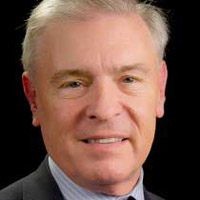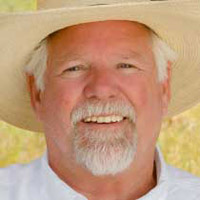Preparing Your Business Plan

Preparing Your Business Plan
“Other things being equal, a well prepared business plan will increase your chances of obtaining the venture capitalist’s financial commitment.”
Introduction
A business plan is a description of your business. To be complete your plan should describe:
Your company and industry
The product
The market and marketing approach
How the product will be made
Who is involved it) the company, and
How much money the company needs and what it will do with it
You should consider that a well-prepared business plan plays two important roles. First, it is a useful management tool that can help you to plot a course for your company. Second, it is a sales tool that will impress venture capitalists with your planning ability and general competence as a manager. Other things being equal, a well prepared business plan will increase your chances of obtaining the venture capitalist’s financial commitment.
Organization & Content
Business Plan Outline
These are the sections of a business plan.
Summary
Company
Industry
Product
Market
Marketing
Operations
Management
Overall Schedule
Critical Risks and Problems
Financial Information
Summary
A brief description of your product and market
A brief description of the management team
A summary of your financial projections
The amount of money you now seek, in what form, and for what purpose
Company
Date and state of incorporation
Principals and what roles each of the principals played in bringing the business where it is today
Business purpose and highlights of progress to date
Industry
Present your view of the current status and prospects for the industry
Describe the principal participants and how they are performing
Describe the affect of major economic, social, technological, or regulatory trends
Product
Description
Research and development
Proprietary features
Future development
Market
Market definition
Market size
Market trends
Competition
Marketing
Estimated sales and market share
Strategy
Pricing
Sales and distribution
Service and warranty policies
Advertising, public relations and promotion
Operations
Location
Plant and equipment
Manufacturing processes
Labor
Management
Organization
Key management
Board of Directors
Professional services
Overall Schedule
Should be realistic
Completion dates for major aspects of the plan
Critical Risks and Problems
Negative factors
Plans to minimize impact of the negative factors
Financial Information
Funding request
Desired financing
Capitalization
Use of funds
Future financing
Current financial statements
Financial projections
Writing the Executive Summary
Many venture capitalists like to review a short summary of a business plan so they can quickly decide if it is worth their time to review the whole plan. Therefore, your objective in the summary is to convince venture capitalists to study your plan further.
The summary should describe all of the key elements of your business plan in just one or two pages. It should include the following information:
A brief description of your product and market
A brief description of the management team
A summary of your financial projections
The amount of money you now seek, in what form, and for what purpose
Company
The purpose of this section is to provide venture capitalists with background information on your company and to describe the nature and current condition of your industry. It should include the following information:
Date and state of incorporation
Principals and what roles each of the principals played in bringing the business where it is today
Business purpose and highlights of progress to date, including major developments such as the introduction of a new product
Industry
Present your view of the current status and process for the industry
Describe the principal participants and how they are performing, including growth in sales, profits, and current market share
Describe the affect of major economic, social, technological, or regulatory trends
Product
Your objective in this section is to completely, yet concisely, describe your product, along with any proprietary features and future development plans. It should include the following information:
Description – Describe the company’s product in detail indicating its nature and application. Include material such as engineering studies, photographs, and selling brochures.
Research and development – Describe the nature and extent of research and development work that must be completed before your product is placed on the market. The costs and time required to achieve a marketable product should be indicated.
Proprietary features – Describe any patents, trade secrets, and other proprietary features. Discuss any other factors that have allowed, or could allow you to obtain an advantageous position in your industry.
Future development – Discuss plans for extension of your present product, and development of new or related products.
Present your view of the current status and process for the industry.
Describe the principal participants and how they are performing, including growth in sales, profits, and current market share.
Describe the affect of major economic, social, technological, or regulatory trends.
We hope you found this article about “Preparing Your Business Plan” helpful. If you have questions or need expert tax or family office advice that’s refreshingly objective (we never sell investments), please contact us or visit our Family office page or website www.GROCO.com.
To receive our free newsletter, contact us here.
Subscribe our YouTube Channel for more updates.

Alan Olsen, is the Host of the American Dreams Show and the Managing Partner of GROCO.com. GROCO is a premier family office and tax advisory firm located in the San Francisco Bay area serving clients all over the world.
Alan L. Olsen, CPA, Wikipedia Bio

GROCO.com is a proud sponsor of The American Dreams Show.

The American Dreams show was the brainchild of Alan Olsen, CPA, MBA. It was originally created to fill a specific need; often inexperienced entrepreneurs lacked basic information about raising capital and how to successfully start a business.
Alan sincerely wanted to respond to the many requests from aspiring entrepreneurs asking for the information and introductions they needed. But he had to find a way to help in which his venture capital clients and friends would not mind.
The American Dreams show became the solution, first as a radio show and now with YouTube videos as well. Always respectful of interview guest’s time, he’s able to give access to individuals information and inspiration previously inaccessible to the first-time entrepreneurs who need it most.
They can listen to venture capitalists and successful business people explain first-hand, how they got to where they are, how to start a company, how to overcome challenges, how they see the future evolving, opportunities, work-life balance and so much more..
American Dreams discusses many topics from some of the world’s most successful individuals about their secrets to life’s success. Topics from guest have included:
Creating purpose in life / Building a foundation for their life / Solving problems / Finding fulfillment through philanthropy and service / Becoming self-reliant / Enhancing effective leadership / Balancing family and work…

MyPaths.com (Also sponsored by GROCO) provides free access to content and world-class entrepreneurs, influencers and thought leaders’ personal success stories. To help you find your path in life to true, sustainable success & happiness. It’s mission statement:
In an increasingly complex and difficult world, we hope to help you find your personal path in life and build a strong foundation by learning how others found success and happiness. True and sustainable success and happiness are different for each one of us but possible, often despite significant challenges.
Our mission at MyPaths.com is to provide resources and firsthand accounts of how others found their paths in life, so you can do the same.
Why Startups Need Legal Counsel | Jackie Ammon
About Jackie Ammon Jackie Ammon is a senior associate who focuses her practice on corporate matters at WilmerHale. Prior to joining WilmerHale, Ms. Ammon was a judicial extern for the Honorable Frederick F. Mumm of the US District Court for the Central District of California. In that role, she wrote Report and Recommendation for…
The 10 Laws of Trust | Joel Peterson
About Joel Peterson Joel Peterson is Chairman of JetBlue and a consulting Professor at the Stanford Graduate School of Business. Together along with David Kaplan he authored The 10 Laws of Trust, a business leadership book about building high-trust organizations. Mr. Peterson is the former managing partner of Trammel Crow, one of the top leading…
LuLaRoe – Disrupting The Retail Market | Mark Stidham
Transcript of LuLaRoe – Disrupting The Retail Market | Mark Stidham: Alan Olsen: Mark Stidham is the CEO of LuLaRoe, a direct to consumer clothing company that he and his wife DeAnne started in 2013. Since it’s inception it has been transforming the fashion. Mark Stidham: I grew up with my Dad being a…
Udacity-Democratizing Education | Sebastian Thrun
About Sebastian Thrun Founder of Udacity Sebastian Thrun is a scientist, educator, inventor, and entrepreneur. He is the founder, chairman, and president of Udacity, whose mission is to democratize education. Udacity focuses on affordable, lifelong learning to give people the needed skills to get a new job or advance their career. Today, the company has…




